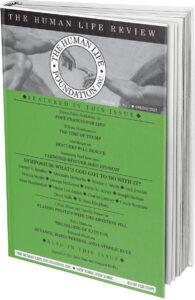Film Review: It’s a Girl
It’s a Girl
Directed and edited by Evan Grae Davis
Produced by Andrew Brown
1:02, Shadowline Films, 2012.
www.itsagirlmovie.com
“The three deadliest words in the world,” according to this documentary, are “it’s a girl.” In many countries in the world, being female is reason for a death sentence, often before, but also even after birth. Sex-selection abortions (whose victims, when people resort to feticide, are almost always females), female infanticide, and abandonment of newborn girls are pathologies plaguing many societies. This film documents the “gendercide” underway in the world’s biggest countries: India and China. It adduces the evidence powerfully, as far as it goes.
Samuel Huntington has shown rather convincingly that culture, rather than politics or even economics, is the greatest shaper of human behavior. When combined with legal coercion, the mix can be a particularly lethal brew. India and China, on which this film focuses, are both societies with son preferences; in the latter, that cultural bias is exacerbated by the regime’s “one child” policy, coercively enforced by family-planning bureaucrats. The result in both countries is a serious sex-ratio imbalance. A normal society’s boy-to-girl ratio is 105:100. In some places in China, that ratio is skewed towards 140:100. It’s a Girl estimates that in China there are 37 million more men than women, and that in India one in four girls does not live past puberty. The film also claims that China has the world’s highest female suicide rate; that may not be true, but it certainly is one of the few countries where more women than men kill themselves, and the vast majority of high-female-suicide countries lie in East Asia.
This film puts faces on gendercide. It opens with an Indian mother who admits, with no particular emotion, to killing her daughters. Other experts discuss in a matter-of-fact manner the way Indian mothers commit murder; suffocation, strangulation, and poisoning are routine. The dimensions of the problem in India precede as well as follow birth: sex-selection abortion, killing female newborns, neglect and abandonment, violence. Sometimes mothers are complicit; sometimes they are also victims of violence (often from husbands and mothers-in-law) when they are uncooperative.
The Chinese face is presented through women seeking to avoid the draconian “one child” policy, which was imposed in 1979. Besides the extreme sex-ratio imbalance (with consequent problems of men without women to marry), the policy has spawned abandonment of babies, abduction of little girls for future arranged marriages, trafficking in children, and a further decay in social solidarity through encouragement of spying and informing on fellow citizens. It’s a Girl also reports that children born without authorization are non-persons in their own country, deprived of social benefits (school matriculation, health care, or food rations). According to the film, they cannot even obtain passports (since they are non-persons), so they are men and women without a country, yet unable to leave the country that does not want them.
But even if the Chinese interviews show the perversion of public policy, the Indian interviews reaffirm Huntington’s emphasis on the priority of culture. The film issues a j’accuse at democratic India, which “officially” bans ultrasounds for sex-determination purposes; has an independent judiciary; and prohibits dowries for marriage. India also has a quite lucrative trade in illegal ultrasound; a legal system that drags its feet on enforcement to fight the roots of gendercide; and a dowry tradition that is alive and well.
A welcome wakeup call to the female extermination rampant in East Asia, It’s a Girl is relatively silent about female feticide closer to home. When British Columbia MP Mark Warawa introduced a Private Member’s motion in the Canadian Parliament in 2012 to condemn sex-selection abortion, it was denied even an up-or-down vote. The film shows Hillary Clinton declaring “human rights are women’s rights and women’s rights are human rights,” though as a Senator Clinton was AWOL on banning sex-selection abortion. Canadian Prime Minister Stephen Harper, in his 2013 statement on “International Day of the Girl,” boldly assured “we remain committed to making Canadian communities safer by protecting young girls”—after making sure the Warawa motion never saw the light of day.
It’s a Girl walks something of a tightrope. In the end, what’s wrong with gendercide—including sex-selection abortion—is that it kills girls, not that it’s involuntary. That makes sex-selection abortion just as despicable if performed by Chinese family-planning goons, macho Indian husbands blaming their wives for their X chromosomes . . . or yuppie Westchester WASPs. That’s why the film performs a great service, as far as it goes.
* * * * *
—David Yves Braun is a sometime contributor to the Human Life Review.









